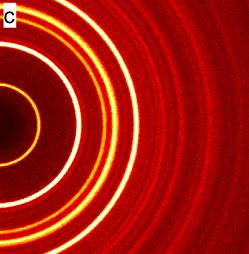When you’re done soldering, cover the soldering iron tip in solder, and store it covered in solder. This prevents it from oxidizing when you’re not using it
See? I’m not lazy, I’m careful!
I solder for work and I cover my tip every time I put it down. Never ever needed to use tip tinner. Also never had to replace a tip either.
Oh, is this why my old soldering iron had the tip explode?
Good to know.
Wow, that’s a thing that can happen!?
When I say explode, I mean the tip shot bits in a 1-2 inch radius after I put pressure on a thick copper wire. It nearly hit my non-dominant hand which was holding the circuit board on the floor tile I used to isolate my soldering shit from the
now singedtableIf you’re trying to make me less terrified of soldering now, it’s not working.
Would it help you to know it was the soldering iron my dad got when he finished his electrician apprenticeship in the early 80s, which was probably a decade old at that point
This kind of sounds like whatever was on the tip had oxidized severely over the intervening 40 years. So when you applied heat it couldn’t conduct very well, so it got hotter and hotter until it had an uncontrolled thermal expansion. This just comes down to especially with older equipment, making sure the device is clean, and if you apply heat be careful especially on the first startup.
One tip that isn’t mentioned is DITCH THE CONICAL TIP, USE A CHISEL TIP.
Conical tips have terrible thermal contact, as they have both poor surface area in contact. Also the tip is further from the heating element, preventing it from heating faster.
Additionally that tiny point doesn’t store any heat, it cools down significantly as soon as it touches anything. A broad chisel tip stores more heat and is far more appropriate for through hole joints like this.
Great, now I can blame my past shitty soldering job to the tips!
In all seriousness, thanks for the tips!
I’ll give you the tip. But only the tip >:|
conicals are good for the small smd parts though, when having a huge contact area and big thermal mass means completely desoldering the part and dragging it off the board when you pull away.
of course, those aren’t the conicals on a $20 orange handle plug in iron…
I use a j tip for fine SMD. You still have a fine point but you also have a broad elbow good for drag soldering and other larger components.
If you have problems, you should probably add flux (make sure to extract fumes if soldering with flux for a while). Some say there is never enough flux.
They don’t want you to know, but you can extract all the fumes and flavors using only your nose!
Seriously though, flux fumes do have a somewhat nice smell to them.
Depends on brand. And my head always hurts after inhaling them for more than a minute without a fume extractor. (I just use a PC fan and some old who-knows-what HEPA-like filter discarded from ventilation equipment. For quick jobs, I hold my breath and/or move out of the way.)
What does flux actually do?
What it looks like: You shat all over the board.
What it smells like: Nasty chemicals but only when hot.
What it does: it helps distribute heat, and causes the solder to be less viscuous and stick to metals readily.
What it feels like to start using it: Wow, it’s like I just gained one year of soldering experience!
What it feels like to remove it from the board after soldering: Aargh… I swear, one more board and I go buy an ultrasonic cleaner. (Some brands are easier but I usually need to employ a spudger, brush, then alcohol annd Q-tip)Note that some solder comes with a core that contains flux or some similar substance of that effect.
Cleans and keeps the solder points clean. Prevents oxygen from reaching the solder joint
This is the best answer. It removes oxides which allows the solder to flow and bond with the metal.
- It removes the oxide layer from existing surfaces so the solder sticks and flows better
- It increases surface tension of the liquid solder so you get a nice round shape and no whiskers and less bridges
- It helps distribute the heat a bit. It works a little bit like thermal paste, especially when the contact area between the tip and the pad/component is very small.
Generally, flux is your friend and soldering without flux is terrible.
It makes the tin non sticky. Heat up a blob of solder for a minute or so to evaporate the flux and then try working with it.
Lower the melting point of solder
It may seem like it melts easier since the parts have better thermal contact. But the melting point is intrinsic to the metal alloy
Remember that all the flux you use will need to be cleaned off eventually. That can sometimes be a pain if there’s a lot.
I know, I mentioned it in that long comment
Step 2 has never been very clear to me and this diagram doesn’t seem to explain it either.
-
Do you touch the tip of the solder to the iron, the pin, or the pad?
-
Do you push the tip of the solder down into the pad, draw it up along the pin, or pull it away as it melts?
-
Why does the solder sometimes flow onto the iron instead of staying on the pad?
-
touch the tip of the solder where the iron meets the pad or the pin
-
try to get as much contact with both the pad as the pin as you can
-
the pad could be dirty or not hot enough. Especially when the pad is connected to a ground or power plane layer in the PCB it may take longer than expected to reach a sufficient temperature. Usually adding some flux helps remove any dirt.
Thank you kind internet stranger!
-
- Do you push the tip of the solder down into the pad, draw it up along the pin, or pull it away as it melts?
According to what I remembered, you don’t move the solder at step 2, but when you are almost finished (step 3-4), you should pull it up along the pin.
Both, which is why conical tips suck. They make poor contact with the pin and pad. With a chisel tip you make good contact with the pin and pad
You add some solder to the tip, then drag it across the pin and pad. Solder flows towards heat and if the joint is properly heated the solder should flow beautifully.
Sometimes the pad isn’t heated (probably because the conical tip isn’t heating it) and doesn’t want to stick to the pad. It can also be due to oxidation on the joint surface. Add some flux to the surface and try again, allowing the iron to melt and activate the flux.
Additionally:
- What do I do if solder doesn’t stick to contact points?
- What to do if there are plastic parts in contact with pad, like a button, or there’s wire insulation that starts to melt before the solder does?
- How do I clean the tip if I accidentally poked it into plastic?
- How do I detach a part that has bent pins inside the solder layer?
- What does flux do, exactly?
- What’s the difference between liquid flux and flux-core solder?
- How do I prevent oxidation from occurring on copper wires?
- How hot does the iron needs to be?
- Do I need a heat gun?
- How do I hold the wire, iron, solder and the board if I only have two hands?
How do I hold the wire, iron, solder and the board if I only have two hands?
This! I found a nice set of “helping hands” and they’re… really helpful!
Which brand are you using? I’ve tried a couple generic sets, but they were so light that I could topple them over by just blowing really hard.
KOTTO brand with magnetic base. The arms and base are very sturdy.
It does indeed look pretty sturdy and ergonomic. Thanks! I’ll definitely order one when I’ll be able to receive shippings again.
1 if all parts are hot, it shouldn’t matter. As soon as you touch anything with the solder, it should distribute evenly around the pad and component.
2 you just feed it into the joint
- If you are not quick enough, the flux in the solder evaporates and it becomes sticky. At this point, clean it and start fresh. Other possibility is that you didn’t heat part and component enough for the solder to flow
-
This works great if everything is fresh and new, now post a guide about cleaning up/redoing 20 year old solder without burning a hole in the board 😅
That solder wick stuff makes me want to rage
Clean everything with a board cleaner/alcohol.
Use a heat gun for the stubborn things.
Solder wick is fine, but if it’s a through hole on a ground plane your going to be there a really long time.
Use the least amount of heat you can get away with.
Sometimes adding fresh solder on top of the old solder helps the heat spread so you can use the wick more effectively.
Constantly use fresh wick, and if it’s really stubborn dip your wick in extra flux.
Desoldering guns are awesome, but a little spendy.
Massive Ground planes on a multi layer board were my breaking point.
I tried to clean the through holes where a micro USB port was secured and only could get it cleared by drilling out the solder… (Only had a soldering iron and wick available)
Adding fresh solder can also help if it’s leaded / flux cored and the existing solder isn’t
I’ve done the rgb mod for an old NES. The PPU is on a big ground plane and just impossible to get off using a wick. Or you can, but now you’ve put so much heat into the chip that you fried it. Need a heat gun or hot plate.
Playstation SD card mod is easier than hand desoldering the NES PPU, and it involves scraping away very thin traces and soldering to them.
Add generous amount of flux and fresh solder to it
Utilize Flux and alcohol. Clean with alcohol utilizing a wipe-clean-wipe method. After soldering with Flux, clean off residual Flux with alcohol. Leaving Flux can promote corrosion. My phone keeps autocorrecting Flux to capitalize it, and I don’t care enough to fix it. 🤷♂️
Edit: Do not use clinical isopropyl alcohol solutions (~70% whatever). Those solutions need some water to work as a disinfectant. You want as little water as possible (>99% solution).
Believe it or not, isopropyl alcohol leaves residue behind. If you’ve ever wiped a shiny metal surface with it, you might see it looks a bit duller. Wiping after using alcohol is attempting to remove the residue to give the cleanest bonding surface possible.
Fun fact, the only way you are getting > 96.2% alcohol is with a molecular sieve and some other random wack shizzle.
Don’t drink more than 96%. It’s not natural. It’s also poisonous.
I couldn’t remember what the standard industrial solution was. All I could remember is that it’s impossible to have 100% because water is introduced to the solution the moment it’s exposed to air.
It’s not impossible, just difficult. Depending on how water free you actually need the result do be, you might be able to get away with just a dehumidifier. If that is not good enough, you can put your entire purification process in a box and flood it with an inrert gas like argon or nitrogen. Storing this is not that difficult, but you need to be sure you are in a moisture free environment whenever you open the container.
Another interesting difficulty is you cannot direct distil it to beyond around 90%, because at that concetration water and isopropyl has the same boiling point. So, you need to mix in another chemical like benzene to distill out the water, then you can distill out the addidive as a second step.
What are the ideal iron temps for your typical solder? I have an old Weller system and I feel like my results are way too inconsistent.
Check the documentation for your soldering station, if your soldering station doesn’t have any documentation you can go with the melting point of the solder itself plus some overhead.
But as illustrated below, it can get a little complicated, if you’re doing a lot of soldering with the same solder you’ll experiment and figure out what’s good for you
Ideally you want to use the lowest temperature you can get away with, using too much temperature can potentially shorten the lifespan of your soldering tips, and potentially damage the printed circuit board.
Get a testing board, any old board will do, and do some soldering and desoldering at different temperatures.
https://kb.hakkousa.com/KnowledgebaseArticle10297.aspx
lets look at the melting points of common solders:
- Tin/Lead (Sn63/Pb37) - 183°C
- SAC 305 (Sn/Ag3.0/Cu0.5) - 220°C
- SN100 (Sn) - 232°C
Now let’s add the 50°C we need for making a good soldering connection:
- Tin/Lead: 183°C + 50°C = 233°C
- SAC 305: 220°C + 50°C = 270°C
- SN100: 232°C + 50°C = 282°C
We now need to consider the type of soldering station we are using…Soldering Station which has very good performance, we should add approximately 100°C as the heat reserve for quick thermal recovery. The resulting temperature settings are:
- Tin/Lead: 233°C + 100°C = 333°C
- SAC 305: 270°C + 100°C = 370°C
- SN100: 282°C + 100°C = 382°C
350°C has been my sweet spot with my hakko soldering station
the 888 dial set to 12-o-clock or one-o-clock lol
As mentioned, you need the pad to be hot for the solder to wick onto it. There is missing info in step 1. Step 1 should say to have a slightly wet iron (solder on the iron). You used this molten solder as the heat transfer medium. Hold the iron so the wet solder on it is touching the pad and lead. This gives more surface area for the heat to travel from the iron to the pad. A dry iron touching a pad will have poor thermal connection, so the pad will take a long time to heat up.
I think an apt comparison is touching hot stuff with a wet glove. With a dry glove, the heat has to conduct through the fabric before heating your hand. With a wet glove, the heat is conducting through the water and burning your hand. The solder, like the water in the wet glove, is a bridge for the iron to transfer heat efficiently to the pad.
I think a lot of hobby soldering guides really neglect the idea of heat transfer and thermal mass.
Probably because it is a “dumb iron” with no thermal control. As soon as it touches anything it cools way down. Nowadays fortunately, cartridge tip irons are cheap if you’re willing to buy from China. Cartridge tips have the heating element and temp probe built directly into the tip, heat up and adjust extremely fast to thermal loads.
Have you tried eutectic solder? (63/37 tin/lead)
They make an entire guide now just to insult me with their last word, hmpf!
Don’t sell yourself short!
Adafruit my beloved
Highly recommend taking an IPC Cert course if you are able!
Do I just search my local community college for “IPC”? Or look somewhere else?









